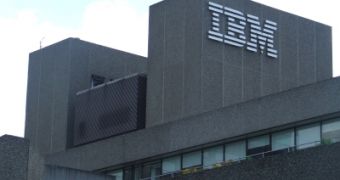Last week, "cloud computing" was in the spotlight, as three major companies announced a joint project to research large-scale computing. The industry giants Hewlett-Packard, Intel and Yahoo said that they would provide facilities, software and infrastructure resources to the new joint project. Following the announcement of the three, IBM also went public with its intentions on cloud computing.
The company announced on Friday that it would invest almost $400 million in cloud computing centers in both the U.S and Japan. In the U.S., the company will spend $360 million to build a state-of-the-art data center at its facility in Research Triangle Park. There, IBM intends to renovate a building on its campus and reuse 95 percent of the original shell, as well as to recycle 90 percent of its materials.
The Tokyo cloud computing center will provide large companies, universities and government agencies immediate access to experts who can help them deploy cloud computing environments. The company also announced that both of these new centers would link to seven other IBM cloud centers around the world.
"Cloud computing is fundamentally about re-engineering the world's computing infrastructure, to enable game-changing -- even life-changing -- applications," said Willy Chiu, Vice President, IBM High Performance On Demand Solutions. "To IBM, cloud computing is much more than the normal evolution of a data center."
Dell is also interested in the development of cloud computing, so much that it has filed an application in the US to trademark the phrase "cloud computing". Dell's actions aren't exactly following the steps of industry giants Hewlett-Packard, Intel and Yahoo on one side and IBM on the other. Even so, it is clear that cloud computing is becoming increasingly important.
Dell could actually succeed in patenting "cloud computing", which it defines as "custom manufacture of computer hardware for use in data centers and mega-scale computing environments for others", and that's because the US Patent and Trademark Office said the filling "has consequently been allowed for registration".

 14 DAY TRIAL //
14 DAY TRIAL //